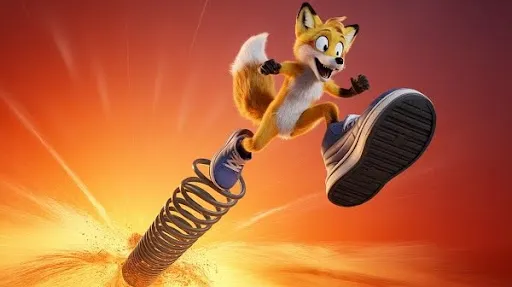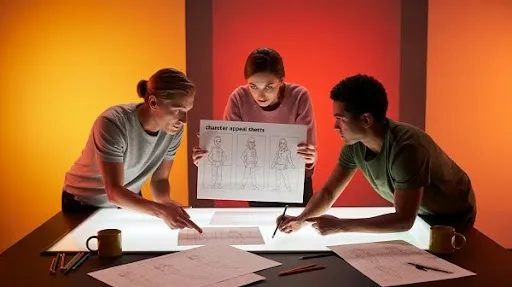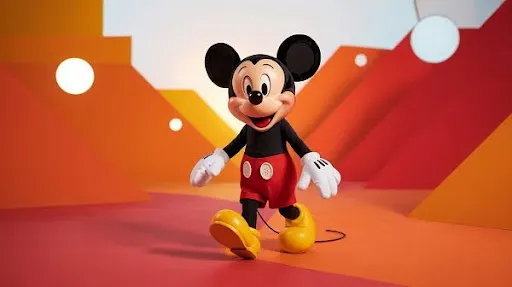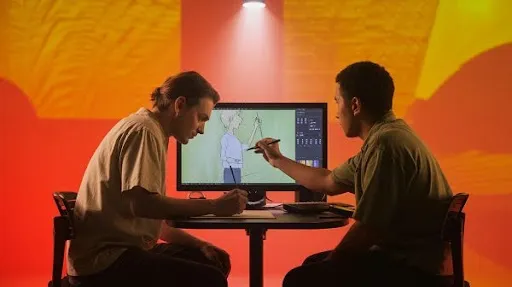Some animated figures never leave your head. They don’t just appear on a screen; they stay with you like an old friend. One glance at them and you feel something, warmth, comfort, or even a spark of joy. That pull isn’t luck. Animators know the trick, and they call it appeal in animation.
This principle is the fine line between a character that disappears the moment credits roll and one that becomes part of pop culture. Appeal is important in animation because it turns flat sketches into personalities we believe in. With appeal, even a stick figure can have charm. Without it, the most detailed render still feels hollow.
Appeal doesn’t always mean “cute” or “funny.” Villains can be loaded with it. Sidekicks can carry it. Pixar even proved a desk lamp could hold appeal; Luxo Jr. hopped on screen, and audiences cared.
For animators and studios, understanding appeal in animation is not some abstract lesson. It’s the foundation for storytelling, for design choices, for audience connection. And for brands or creators looking to stand out, it’s one more reason to hire 2D animators who get it.
The Roots of Appeal in Animation
The term “appeal” has been in the animator’s vocabulary since the early days of Disney. It wasn’t added to the list of principles of animation to sound smart; it came from necessity.
Mickey and the First Wave of Character Appeal
When Walt Disney’s team introduced Mickey Mouse, the design didn’t shock anyone with its technical innovation. Mickey had something simpler: likeability. His round shapes, big ears, and open smile created instant familiarity. He wasn’t detailed, but he was clear. That clarity helped him move from being just another cartoon mouse to a face known around the world.
Other studios noticed. They realized audiences weren’t connecting with characters because of realism, but because of proportions, movement, and charm. The formula was simple: if a design made people feel something, it worked.
Appeal in Contemporary Animation
Skip to today. Audiences watch animated stories everywhere, in movies, ads, games, and even TikTok reels. The rule hasn’t changed: appeal in contemporary animation still determines what sticks.
Take Toothless from How to Train Your Dragon. He doesn’t say a word, yet he’s adored worldwide. His catlike head tilts, the playful hops, and his wide eyes make him relatable. That’s an appeal at work.
What makes this principle so fascinating is its consistency. Technology changes. Styles change. But the need for appeal doesn’t fade; it only grows.
Understanding Appeal in Animation: Core Components
Appeal isn’t a vague buzzword. It breaks down into layers. Each one stacks onto the next to make characters magnetic.
Visual Appeal
First impressions matter. A character with a strong silhouette and clean proportions will catch the eye even in outline form. The visual side of appeal is about creating shapes that are memorable without being cluttered.
Emotional Appeal
Characters can’t just look good. They need to feel something and share it. A smile, a frown, even the tiniest shift in an eyebrow can connect instantly. Once viewers relate to the emotion, the “cartoon” disappears and a personality appears.
Personality Appeal
This is where quirks seal the deal. Bugs Bunny is chewing a carrot with his smirk. SpongeBob is bubbling with relentless optimism. These traits keep us coming back because they’re consistent, entertaining, and human in their own way.
When design, emotion, and personality combine, you don’t just get an appealing drawing; you get a living presence.
How Design and Animation Build Appeal
Appeal isn’t sprinkled on at the end. It’s built into both design and animation from the very start.
Character Design and Clarity
Good character appeal begins before a single frame of motion. Animators and designers rely on techniques like:
- Proportions that guide emotion. Big heads and wide eyes make characters feel approachable. Long limbs can make them look comical or eerie.
- Silhouette testing. If a character is recognizable in shadow, the design is strong.
- Meaningful shapes. Circles usually signal friendliness. Triangles often give danger. Squares feel dependable.
These aren’t rigid rules but creative tools. When used well, they make a design stick in memory.
Appeal in Motion
Even the best-looking design falls apart if it moves like a stiff puppet. That’s where several animation principles kick in:
- Squash and Stretch give flexibility and life. A laughing face looks more natural when it compresses.
- Exaggeration pushes emotions so they land harder. A small pout can turn into a dramatic sulk that feels funnier and clearer.
- Timing makes actions believable. Fast timing adds comedy, slow timing adds weight and seriousness.
- Secondary Actions bring depth. A nervous foot tap, a casual hair flip, tiny moves that tell us what a character is really thinking.
When combined, these principles create polished animation that looks effortless. In reality, animators spend endless hours reviewing and refining animation frame by frame to achieve that smooth flow.
The Language of Color in Animation
Color in animation doesn’t sit in the background; it speaks. The right palette shapes mood, draws focus, and supports character personality.
- Warm tones like red or yellow spark energy, cheer, or tension.
- Cool tones like blue or green suggest calmness, trust, or mystery.
- Contrast helps guide attention to where it matters most.
When Woody in Toy Story wears warm, earthy colors, it instantly communicates approachability. Maleficent, by contrast, dominates with dark purples and sharp blacks, colors that amplify her threat.
Appeal grows stronger when color choices aren’t random but tied to the emotional goal of the design.
Reviewing and Refining Animation
No one creates a perfect appeal on the first try. Animators know the secret lies in constant revision. Every small change, an adjusted eyebrow, a softened pose, a retimed movement, adds up.
Studios that understand appeal don’t rush this stage. They know that reviewing and refining animation is where “okay” turns into “captivating.” Push too far, and it feels fake. Leave it too rough, and it feels lifeless. Finding the sweet spot is where the artistry of animation really shines.
Animations Showcases: Examples of Appeal
Appeal shows up differently depending on the character’s purpose.
Mickey Mouse
Mickey wasn’t realistic, but his circular design, cheerful eyes, and bouncy movements won over audiences instantly. He’s a case study in how simplicity plus clarity equals timeless charm.
Scar in The Lion King
Appeal doesn’t always mean “nice.” Scar was crafted with sharp edges, narrow eyes, and darker shades to project menace. He’s memorable because he’s designed to make you wary, proof that appeal can create fear just as easily as affection.
Elsa in Frozen
Elsa became iconic not just because of the music. Her flowing dress, expressive face, and subtle emotional beats gave her mass relatability. She showed that in contemporary animation, appeal is as much about emotional depth as it is about design.
Together, these animations showcases prove one thing: appeal is flexible. It works for heroes, villains, sidekicks, and mascots. The key is intention.
The Broader Impact of Appeal in Animation
When people talk about appeal, they usually mean characters. But it actually runs deeper. A whole environment can carry appeal, the lighting, the props, even the way a scene moves from one beat to the next. Done right, everything feels like it belongs to the same living world.
Take Tangled’s lantern sequence. Rapunzel and Flynn already carried the emotional weight, but the thousands of glowing lanterns transformed that moment. It wasn’t just a backdrop; it became part of the story, lifting it into something audiences couldn’t forget.
That same rule shows up in advertising. A mascot with a smile that feels genuine, or even a logo that bounces with just the right rhythm, can make a brand stick in your head. The most successful companies don’t chase surface-level polish. They focus on creating something that feels approachable, something you’d want to come back to.
Why 2D Animators Still Hold Their Ground
The spotlight today often leans toward 3D, but 2D animation still carries unmatched charm. Without complex rigs and rendering, 2D animators rely on clarity, shapes, lines, and timing. That simplicity pushes them to capture the essence of appeal.
When studios hire 2D animators, they’re not just buying “drawings.” They’re paying for personality on screen. Every flick of an eyebrow, every exaggerated walk cycle, every playful grin, it’s those details that turn sketches into characters audiences remember.
Strip a character of that, and it’s just another drawing. Add it in, and suddenly even a simple figure with minimal lines can feel alive. That’s why explainer videos, short ads, and branded content with appealing 2D animation often outlast plain text or lifeless graphics in people’s memory.
The worldwide market for 2D animation software was estimated at USD 6.57 billion in 2026, and it is anticipated to grow to approximately USD 15.24 billion by 2033, reflecting a compound annual growth rate (CAGR) of around 8.8%.
A Universal Language
One of the most powerful aspects of appeal in animation is how it ignores borders. Humor, warmth, and personality land instantly, no translation needed.
Japanese anime leans into “kawaii” traits, big eyes, soft gestures, and delicate expressions. Western animation often exaggerates quirks or plays up humor. On the surface, they look completely different, but they rely on the same principle: connect with emotions first, let the rest follow.
That’s why international brands often choose appealing animated mascots over text-heavy campaigns. A character that feels genuine doesn’t need subtitles to win people over.
The Psychology Behind It
Appeal isn’t just an artistic trick; it taps straight into how our brains work. Humans are built to scan faces and body language instantly. Animation takes those tiny cues and amplifies them so audiences catch them without effort.
A tilted head, a clumsy stumble, a pause before a smile, all of these make animated figures feel human. And it’s not limited to people. Give a lamp a bounce or a robot a nervous shuffle, and suddenly viewers see personality. That’s why WALL-E’s timid glances pull on emotions without him saying much of anything.
The principle works because it doesn’t fight human nature; it rides along with it.
Practical Ways Animators Build Appeal
Every animator has their habits, but there are a few reliable ways to inject appeal:
- Play with shapes. Circles read as friendly, triangles bring tension, and squares feel solid. Starting with shapes sets the tone.
- Test silhouettes. If you can tell who the character is just by shadow, the design is strong.
- Give one defining trait. Maybe it’s a walk, oversized glasses, or a quirky habit. That one thing sticks.
- Study real people. Notice how someone laughs or fidgets; it’s often more interesting than invented gestures.
- Keep refining. The most appealing results rarely show up on the first draft.
These aren’t rules to chain yourself to, they’re reminders. The difference between stiff animation and polished animation usually comes down to this kind of attention.
Beyond Cartoons and Films
Appeal has applications far outside the movie theater:
- Marketing: Mascots like Tony the Tiger work because they’re appealing, not just because they’re colorful.
- Education: Friendly animated guides make lessons easier to absorb.
- Apps and design: Even a small bounce when tapping a button makes software feel more human.
- Corporate storytelling: Industries that seem “serious” often use appealing short films to soften their message.
It’s no accident that more companies are looking to hire 2D animators. When done well, appeal makes any type of communication easier to digest.
Clearing Up Misconceptions
Beginners sometimes get appeals wrong:
- It isn’t just about cuteness. Villains can ooze appeal.
- It’s not only for the main hero. Sidekicks, props, even scenery benefit from it.
- Fancy tech doesn’t guarantee it. A bland 3D character with no spark is still bland.
Appeal comes down to connection, not decoration. The sooner animators understand that, the stronger their work becomes.
Frequently Asked Questions
What is the appeal of animation?
It’s the mix of clarity, charm, and emotional pull that makes a design or motion stick in your mind.
Do villains need appeal, too?
Yes. Scar in The Lion King wouldn’t be so memorable without it. His sharp design and movements amplify his menace.
How does it differ in 2D and 3D?
In 2D, appeal relies heavily on shapes and line clarity. In 3D, subtle gestures and realism add to it. The goal remains the same: make people care.
Can appeal be learned?
Definitely. Talent helps, but most of it comes from practice, studying design, observing people, and refining your craft.
Why does it matter for businesses?
Because appealing content is easier to remember. A character or animation that feels genuine makes audiences stay longer and recall the message later.
Final Words
Appeal in animation is more than one principle on a list; it’s what separates forgettable work from designs people carry with them for years.
From Mickey Mouse’s charm to Toothless’s silent expressions, the proof runs through decades of design and animation. Technology changes, but appeal stays timeless.
For animators, brands, and studios, the takeaway is simple. Build appeal, or hire 2D animators from one of the best animation studios in Burbank, like Prolific Studio, who understand it, and your work won’t just look polished. It’ll stick, resonate, and live beyond the screen.










